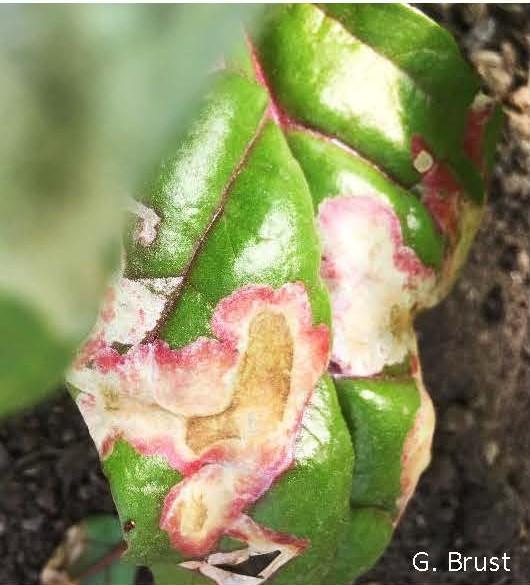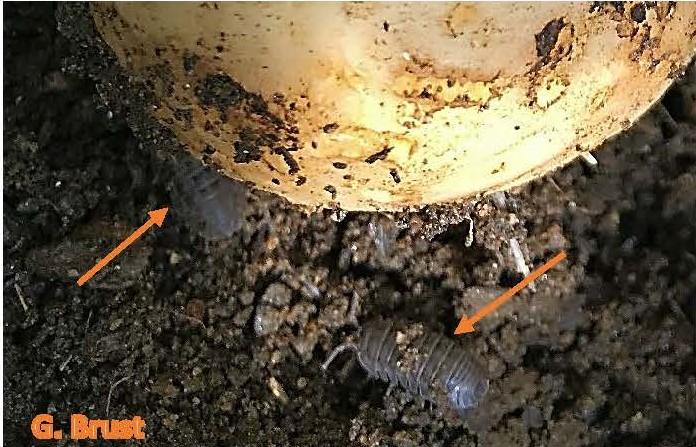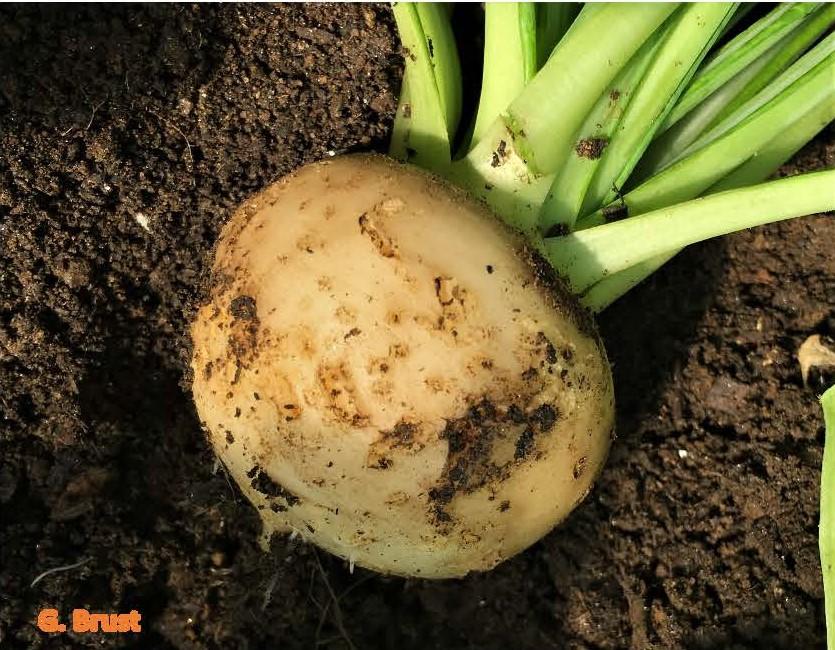Spinach Leafminer and Sowbug Damage
In high tunnels and in the field, I have seen spinach or beet leaf miner Pegomya hyoscyami and P. betae respectively in swiss chard and spinach. These leafminers are a type of blotch leafminer, creating irregularly shaped mines (fig.1). Adults are small flies about 1/3 inch in length and gray to brown. Larvae are whitish and cone-shaped. Flies of both species overwinter as pupae in the soil. In April and early May (although this can occur in March if in a high tunnel), flies emerge and lay white eggs in groups of 4-8 on the underside of leaves. Eggs hatch and larvae feed within the leaf tissue. As the larvae feed and develop, they create areas of dead tissue where they have fed. These areas are opaque at first and then later turn brown (fig. 2). Once inside the leaf tissue larvae are difficult if not impossible to control. The larvae are active for about two to three weeks, before dropping to the ground and pupating in the soil. The entire life cycle is 30-40 days. There are three to four generations per season. Once the summer is over, leafminers will overwinter as a puparium in the soil emerging in early spring the next year to start the cycle again.



